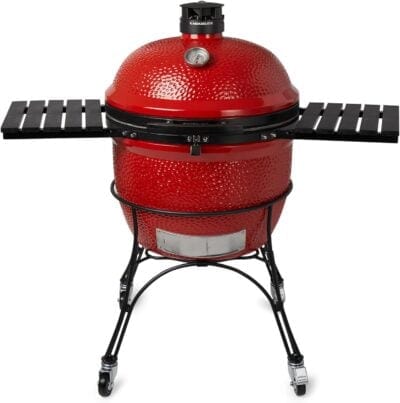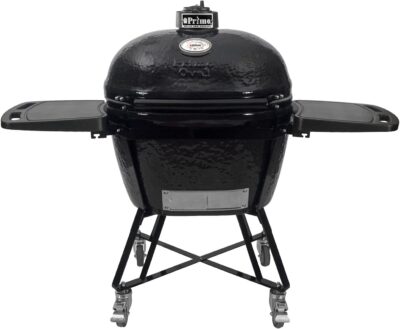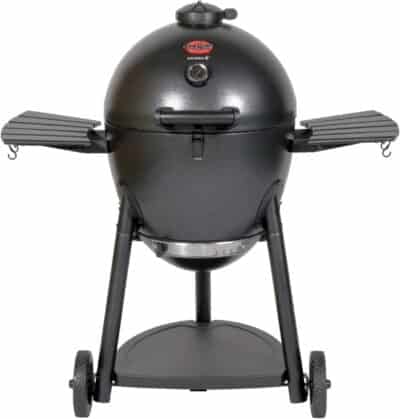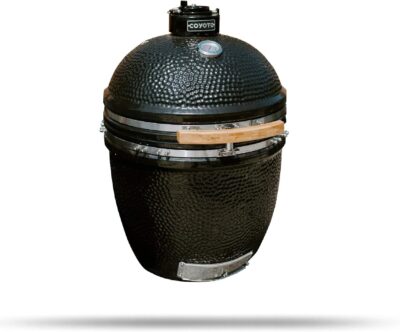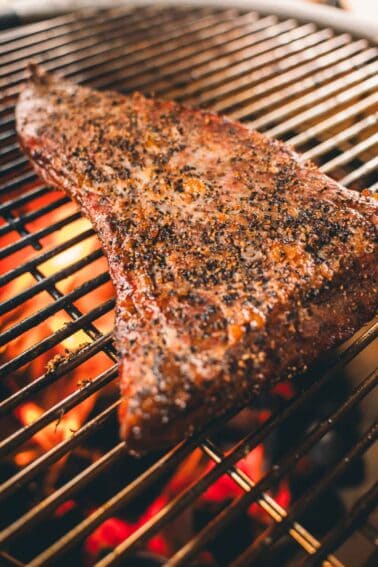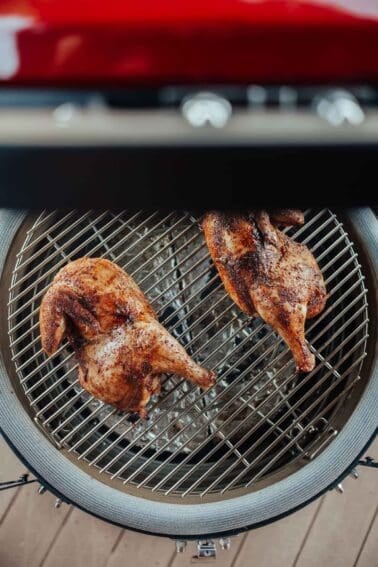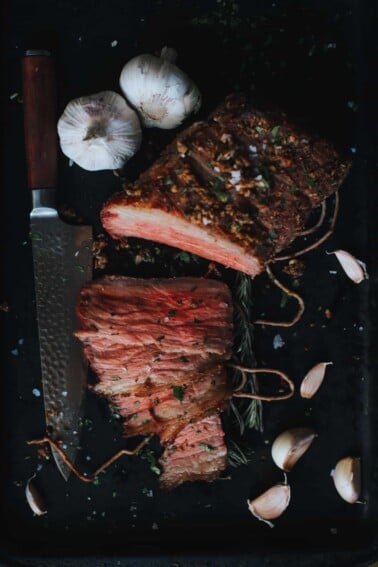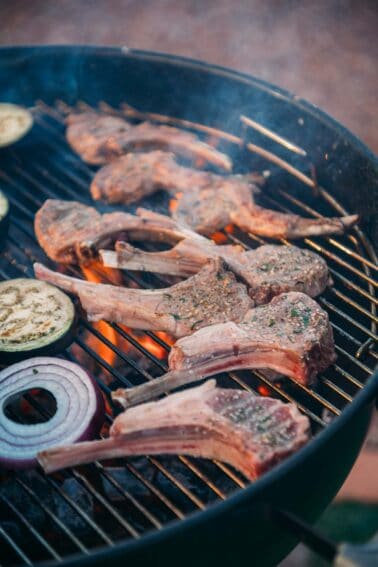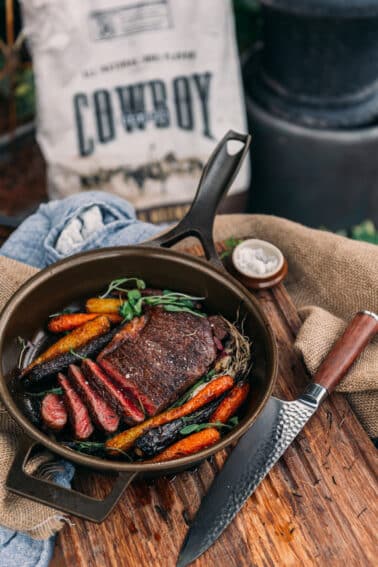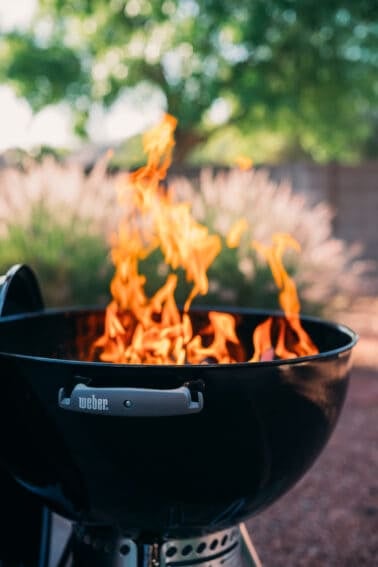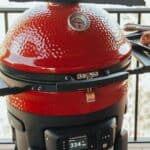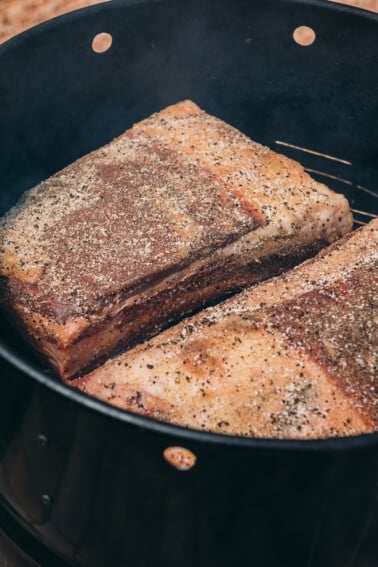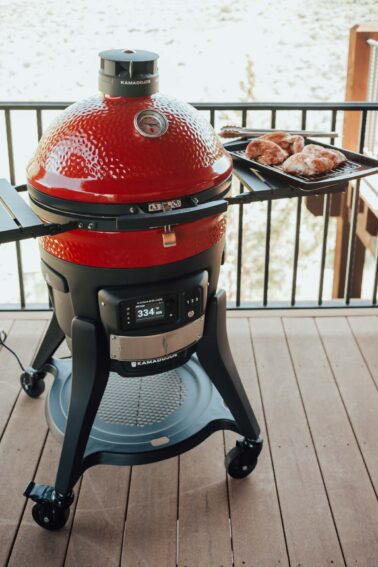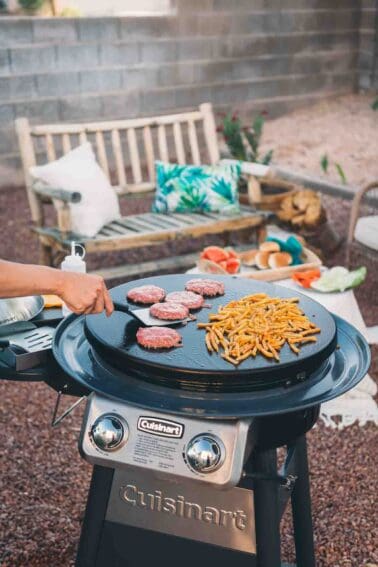Thinking of buying a ceramic grill but think it’s going to be too hard? It won’t. Intimidated by that egg-shaped wonder sitting in your backyard? Don’t be. Your Kamado grill is about to become your ticket to grilling nirvana, and we’re here to show you how.
Don’t be fooled by its charming looks; beneath those thick ceramic walls lies a fiery powerhouse that can manage all your grilling recipes .
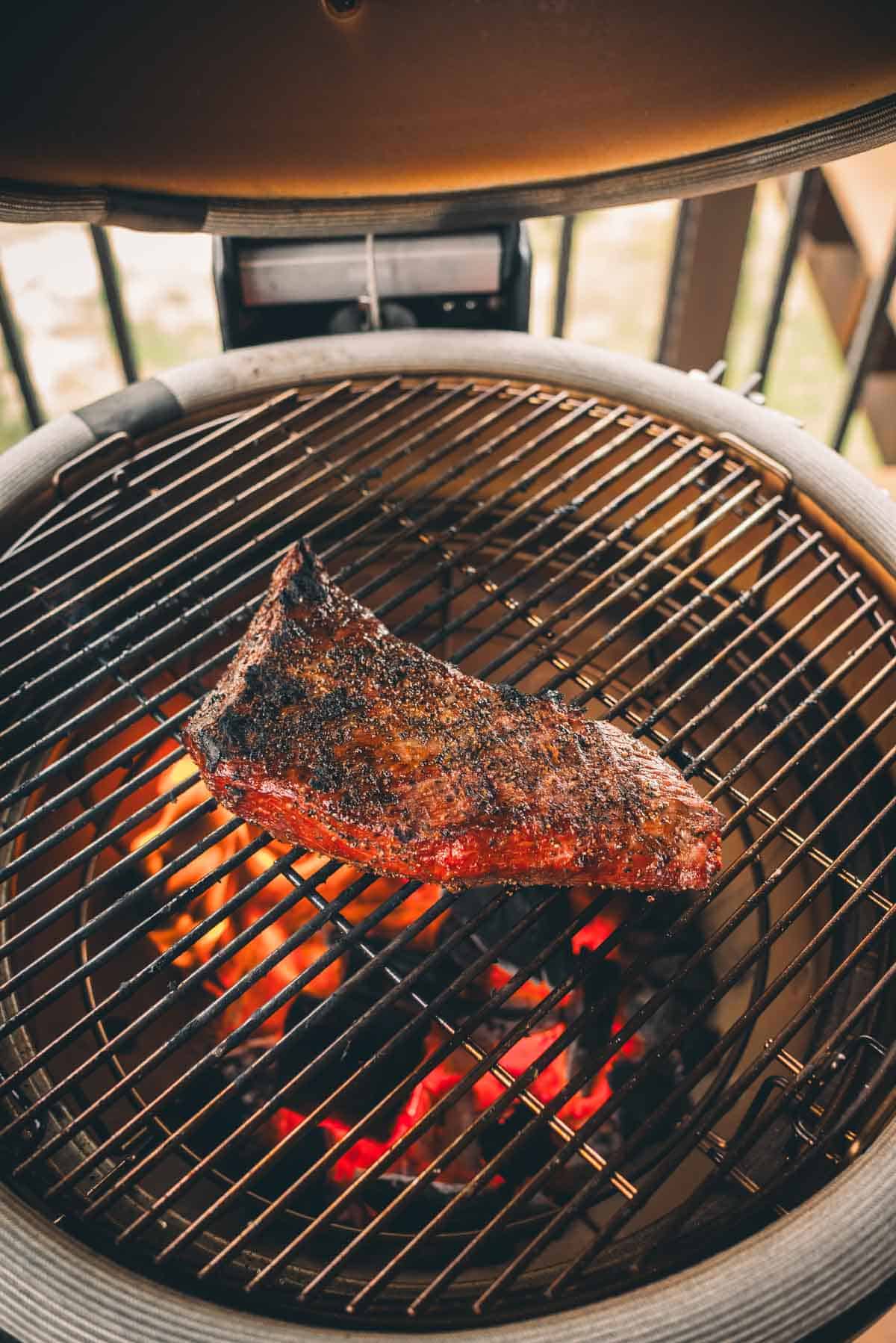
Save This Guide ✉️
Enter your email below, and I’ll send this guide straight to your inbox.
Plus, I’ll send you great new recipes fresh outta the oven.
Table of Contents
- Save This Guide ✉️
- What is a kamado grill?
- Our Favorite Kamado grills
- How to Light Your Kamado Grill
- Brand new Grill?
- Cooking With Your Kamado
- Our favorite Kamado Recipes
- How to Clean a Kamado Grill
- Pros of a Kamado: Why It’s Worth the Hype
- Cons of a Kamado Grill: things to Consider
- Is a Kamado An Investment Worth Making?
- More helpful Grilling Tips
- FAqs
Forget everything you thought you knew about grilling. Whether it’s a Big Green Egg, a Kamado Joe, or a Primo, these grills aren’t just another cooker – it’s a versatile outdoor oven that’ll fine-tune your backyard cuisine (that’s right, cuisine, not just BBQ).
Struggling with temperature control on your regular grill? The Kamado’s ceramic walls and adjustable vents make maintaining precise heat a breeze. Tired of dried-out meats? This grill’s moisture-retaining design ensures juicy results every time. Whether you’re searing steaks, smoking ribs, or even baking pizza, your Kamado can do it all – and we’ll show you how.
From lighting your first fire to mastering advanced techniques, our step-by-step guide will take you from Kamado novice to neighborhood grill master in no time.
Your Kamado adventure starts here – and trust us, your taste buds will thank you.
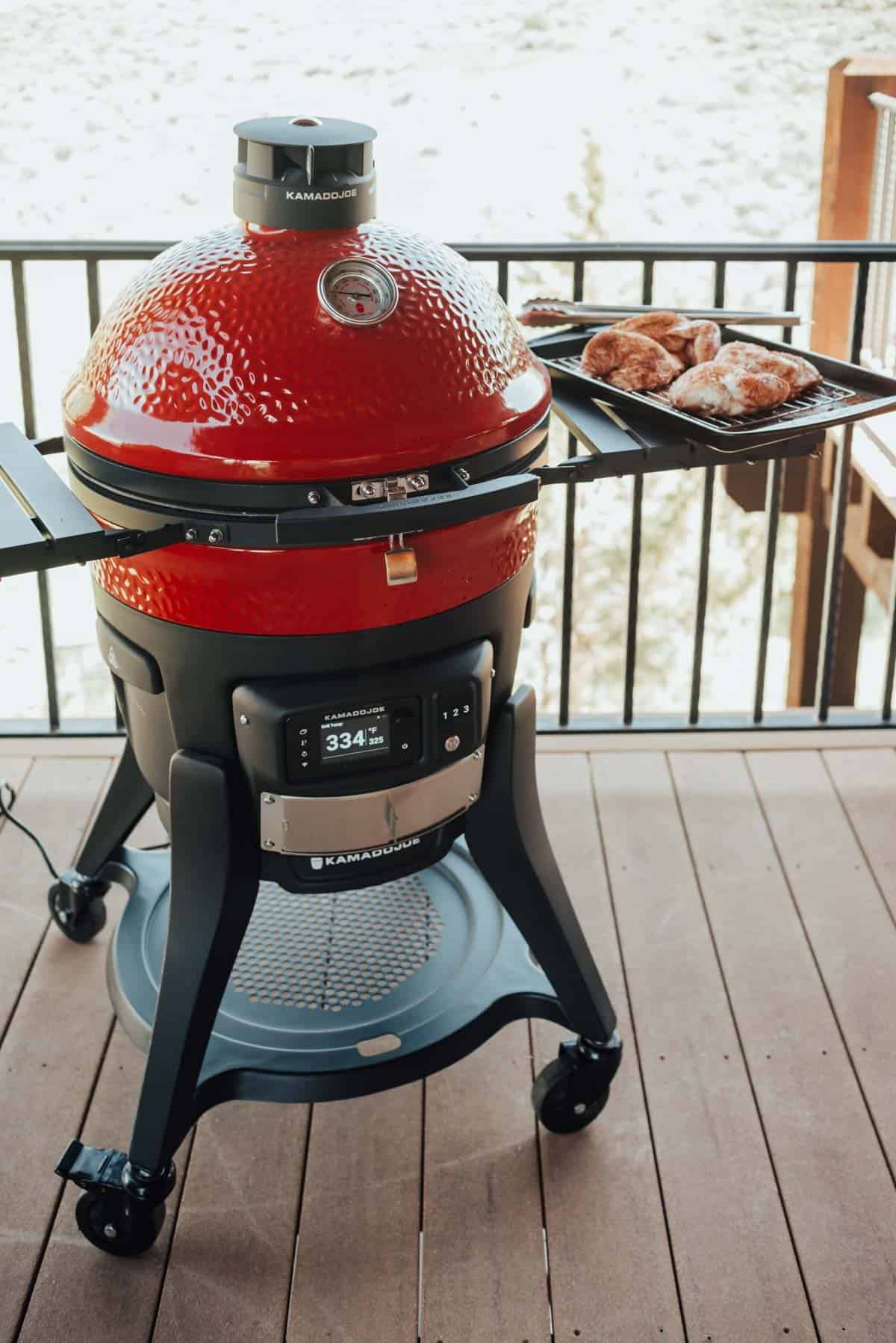
What is a kamado grill?
A kamado-style grill is an egg-shaped charcoal grill that originated in southern Japan. Most modern kamado grills are constructed from either ceramic or stainless steel. Ceramic is the most popular choice because it boasts exceptional heat retention properties, distributing heat evenly throughout the entire cooking chamber.
The exterior of a kamado grill is typically finished with a colorful, dimpled ceramic coating. Big Green Eggs are clad in green, while Kamado Joes sport a fiery red exterior. Other kamado grill brands offer a variety of colors, with black being a common choice.
See our Kamado Joe Konnected Review for the new tech in ceramic grilling.
Charcoal is loaded into the bottom of the kamado, and airflow is controlled by a bottom vent and an exhaust vent located in the hinged lid. A key feature of a ceramic kamado grill is its versatility.
It excels at maintaining different temperatures, from the low-and-slow smoking temperatures around 225 degrees Fahrenheit (°F) perfect for creating melt-in-your-mouth barbecue, all the way up to high temperatures exceeding 700°F, ideal for achieving those coveted sear marks on steaks.
This impressive temperature range makes kamado grills perfect for a wide variety of dishes, including succulent meats, tender vegetables, crispy pizzas, crusty breads, and even decadent desserts.
Our Favorite Kamado grills
Here’s some cooking gear I really like.
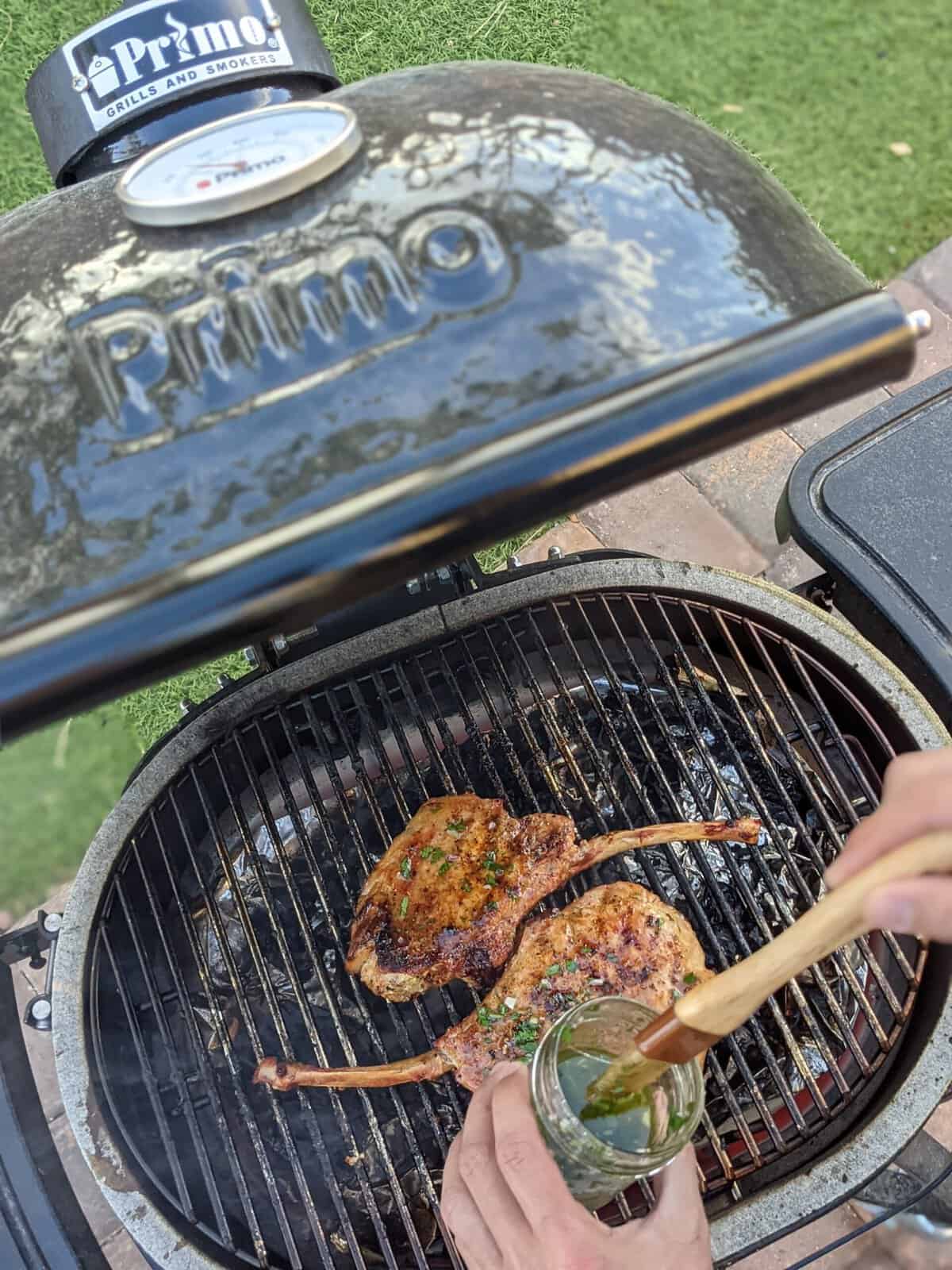
How to Light Your Kamado Grill
Before you start on your kamado grilling adventure, make sure to review important grilling safety tips.
Important note: Never use lighter fluid when firing up your kamado grill. The liquid can be absorbed by the ceramic and impart unwanted flavors to your food. We also never recommend using lighter fluid to light charcoal. Learn how to light charcoal like a pro so your food always tastes great.
- Start by removing the cooking grate and the ceramic deflector plate. Fill the fire grate at the bottom of the grill with your chosen charcoal.
- You can opt for either lump charcoal or charcoal briquettes. Lump charcoal will burn hotter and faster, producing less ash, while briquettes offer a longer, lower burn that creates more ash.
- Nestle an electric starter (or use a natural alternative like a fire starter) amongst the coals and ignite it with a long lighter. Once the coals are well-lit, carefully replace the deflector plate and cooking grate back inside the kamado.
- Close the grill lid and adjust both the bottom vent and the top exhaust vent. You want to allow enough airflow to maintain the charcoal fire, but avoid introducing so much air that you create large flames erupting from the firebox. An excessive amount of airflow will cause the grill to heat up too quickly, making temperature control difficult. And, these grills hold heat, so they take a long time to cool down.
- Once the smoke transitions from white to a faint, almost clear color, the smoke is considered clean and your kamado is ready for cooking. Become a grill pro with our guide to smoking wood to learn which flavors to add to your grill.
- Fine-tune the temperature by adjusting the bottom vent opening to about a quarter to a half inch wide. Next, adjust the top vent. As you open it wider, the grill temperature will increase.
- For the ultimate convenience, some kamado grill manufacturers offer optional after-market fans that automatically manage the temperature. The fan is installed on the bottom vent and supplies air to the chamber when necessary to maintain or increase heat. The Kamado Joe Konnected Joe, released in 2023, stands out as the first digital ceramic cooker to incorporate a blower fan as a built-in feature.
Brand new Grill?
Before your first use with this grill, or any grill, we recommend running the grill at a high temp for at least 40 minutes and letting it cool compltely. You may call this seasoning your grill, we like to think of it as burning off anything that shouldn’t be there before we start cooking.

Cooking With Your Kamado
Cooking on a kamado grill is fundamentally similar to cooking on any other grill. The key difference lies in whether you choose to cook over direct heat or indirect heat.
For direct-heat cooking, simply place the grill grate inside the cooker. For indirect cooking, utilize the ceramic deflector plate. This heat shield acts as a barrier, protecting your food from the intense heat radiating directly from the coals, allowing you to smoke or bake foods without burning the bottoms.
Remember: the diffuser plates are only safe up to a certain temperature. Remove them if you’re going hot for a sear to prevent them from cracking.
Here’s a tip for Big Green Egg owners: When using the heat deflector plate, position the feet facing upwards and place the grill grate on top. This configuration optimizes air circulation beneath the grate.
Kamado Joe and Primo Grill owners can add the ceramic deflector to the bottom portion of the rack and then place the grate on the top portion of the rack.
No matter what brand of ceramic grill you own, wrap the diffuser plates in foil to make clean-up a breeze. Any grease will drip onto the foil that you can replace after every cook, keeping the plates looking new.
Remember: The deflector plates are not designed for direct cooking. Placing a pizza directly on the deflector will result in a burnt pizza. Instead, use a pizza stone placed either on the grate or on top of the deflector for perfectly cooked wood-fired pizzas.
Once you’ve achieved your target temperature using the grill’s vents and the included thermometer in the lid of the Kamado grill, it’s time to add your food! Feeling adventurous? This is a great opportunity to experiment with the best steaks for grilling or cheap cuts of meat.
Our favorite Kamado Recipes
Beef Recipes
Smoked Tri-Tip
Grilling Recipes
Grilled Summer Pizza with Salami, Sweet Corn and Burrata
Poultry Recipes
Smoked Half Chickens
Beef Recipes
Charcoal grilled Roast Beef
How to Clean a Kamado Grill
After each grilling session, it’s important to remove any leftover ash residue. Many kamado grills offer handy grill tools like Kick Ash baskets that help loosen ash from partially burned coals. Alternatively, you can utilize the grill’s included ash tool to push ash towards the bottom.
- Once the ash accumulates at the bottom of the grill, open the bottom vent and remove the ash.
- Big Green Egg owners can use the ash tool to scoop the ash into a bucket. Kamado Joe models feature an ash drawer for convenient disposal – simply pull out the drawer and empty the ash.
- Another important cleaning step is regularly cleaning your grill and scraping food residue off the grill grate in between cooks.
- For a deeper clean every few months, crank up the heat to 600°F and let it burn for about 40 minutes. This high heat will burn off any accumulated residue.
Never use soap, water, or cleaning solutions on the inner ceramic of your kamado grill. You can, however, wipe down the exterior with a damp cloth.
It’s also recommended that you cover your grill between uses to protect it from the elements and keep the pretty surface shiny and dust-free.
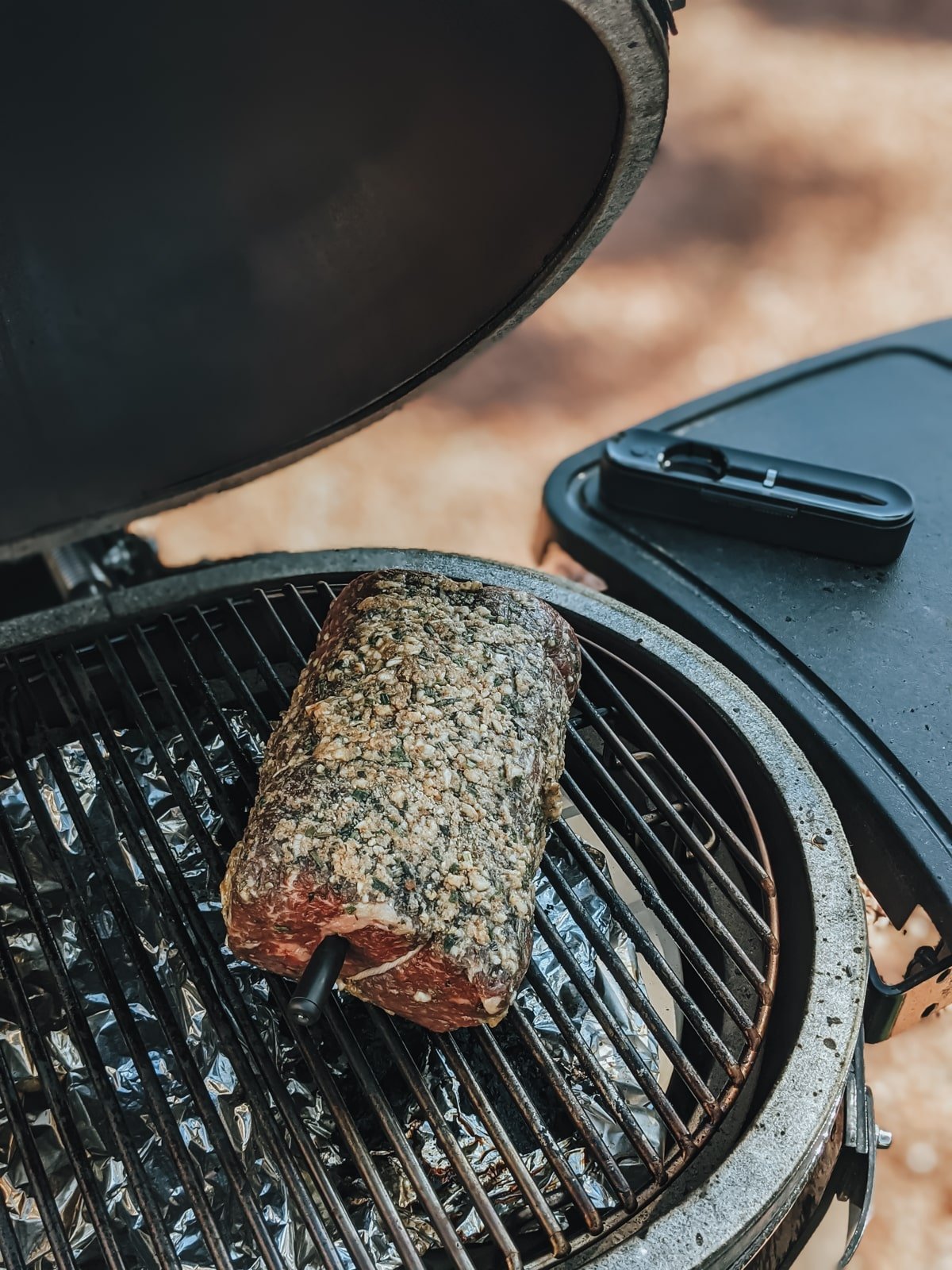
Pros of a Kamado: Why It’s Worth the Hype
- The design of a kamado grill translates to efficient fuel usage. Due to its excellent heat retention and airflow control capabilities, a kamado grill requires significantly less charcoal compared to traditional grills. The thick ceramic walls also contribute to superior moisture retention, resulting in juicier and more flavorful food.
- Kamado grills are true culinary chameleons, capable of handling a wide variety of dishes. Low and slow smoked roast beef or smoked brisket? Check. Perfectly reverse-seared cowboy ribeye steaks or juicy hambergers? You got it. Roasting smoked half chickens, heck yeah.
- Even baked goods, breads, and Neapolitan pizzas come out beautifully in a kamado grill. The versatility is further enhanced by the availability of numerous accessories, including griddles, woks, and rotisseries.
- Bonus tip: After you shut down the grill and extinguish the coals, you’ll likely find several partially burned coals remaining inside. These coals can be reused in your next grilling session.
Just remember to remove any loose ash first. When we properly shut our ceramic grill down, we get more use out of our old charcoal than a typical grill.
Cons of a Kamado Grill: things to Consider
While kamado grills offer many advantages, there are a few potential drawbacks to consider.
- Cost: They generally have a higher price tag than other grills and smokers. Most full-size models cost around $1,000, with larger options exceeding $2,000. However, the Char-griller Akorn packs a punch and it’s worth considering if you’re on a tight budget.
- Managing heat: Temperature control can also present a slight learning curve. Kamado grills excel at holding heat, which can sometimes be a double-edged sword. If you get the grill too hot (say, around 400°F), it can be challenging to bring the temperature down to a lower setting, like 225°F for smoking. The best practice is to start cooking at a lower temperature and then gradually increase it if needed.
- Grill space: Most kamado grills are round in shape, which can restrict your cooking area. While larger models may accommodate two racks of ribs on a single grate, smaller models offer less cooking real estate. The Primo Grill, however, boasts an oval design that provides additional length, making it suitable for larger cuts of meat like brisket. Just keep in mind that the Primp Jr. doesn’t have nearly the room that the regular one does.
- Weight: Most kamado grills come equipped with carts for easy mobility around your backyard. However, larger models can be quite heavy and difficult to lift into the back of a truck. Additionally, the ceramic construction, while offering excellent heat retention properties, is somewhat fragile. If you drop a kamado grill, the ceramic is likely to crack. Essentially, park it where you are going to be happy with it sitting for a very long time.
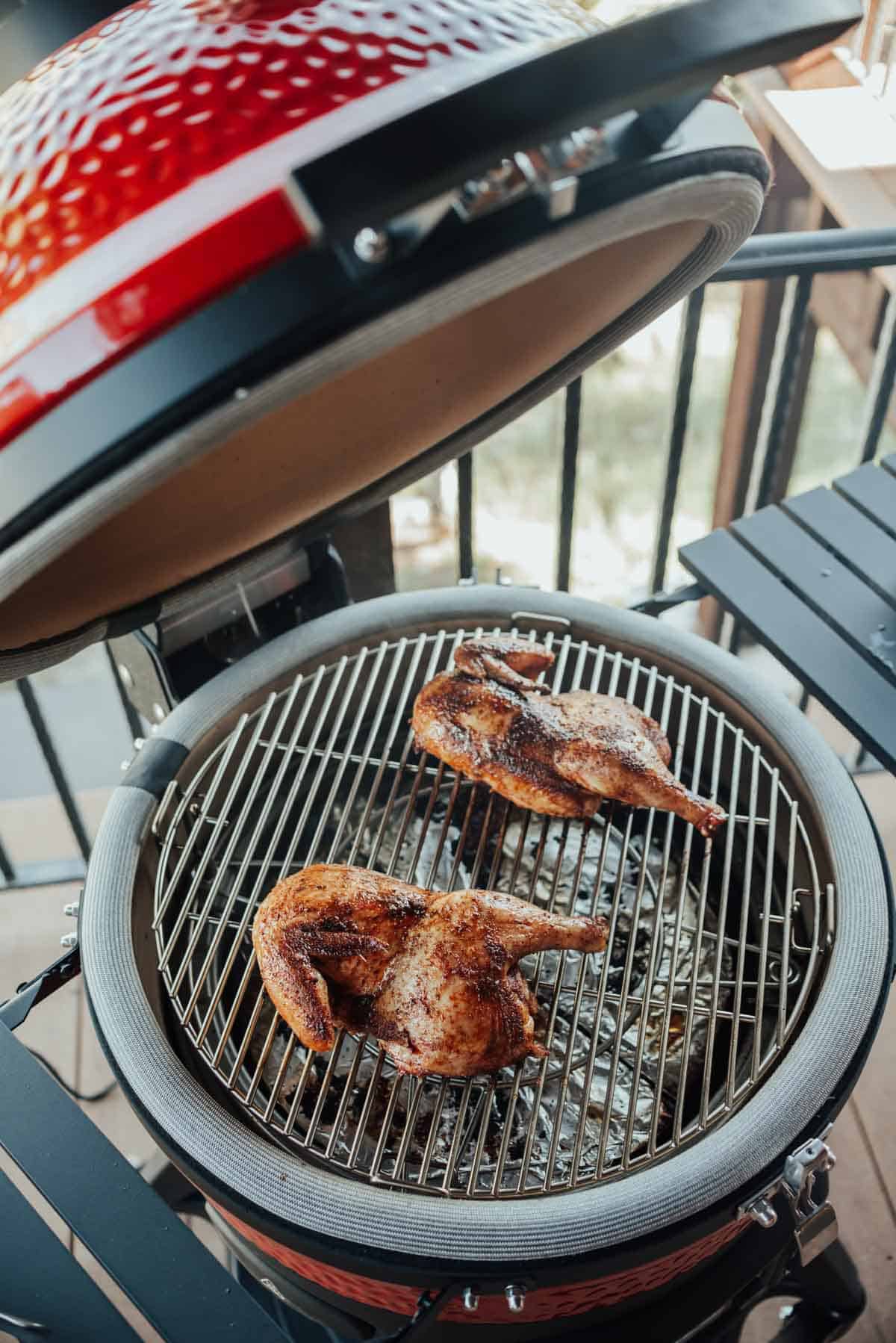
Is a Kamado An Investment Worth Making?
Absolutely. Despite the few drawbacks, kamado grills offer a unique and versatile grilling experience.
Their exceptional heat retention, fuel efficiency, and ability to handle a wide range of cooking methods make them a worthwhile investment for any grilling enthusiast.
With a little practice, you’ll be mastering the art of kamado-style cooking and creating delicious and impressive meals for friends and family in no time. So, are you ready to unlock a world of flavor with your very own kamado grill?
More helpful Grilling Tips
FAqs
Yes and no. Kamado grills are known to have a learning curve and take a little longer to preheat than, say a Weber Kettle. However, once you learn your grill and it is no different than using any barbecue grill.
No, you do not have to use lump charcoal in a ceramic grill. You can use wood or charcoal briquets. However, a good real hardwood lump will give you the best results. We love the clean flavor and no added chemicals in Cowboy Lump Charcoal.
It typically takes about 40 minutes to an hour for your kamado to preheat. Remember, weather and altitude will affect the timing.
Heck yes. We recommend letting the grill preheat with the lid closed before opening it and grilling on a kamado the same way you would use any charcoal grill.
Christie Vanover contributed to this article. She is a championship pitmaster and certified barbecue judge from Las Vegas. She’s cooked on dozens of grills, including the nearly 30 in her backyard. She shares her expertise in grilling and barbecuing through her website, GirlsCanGrill.com. Additionally, Christie has developed her own line of award-winning rubs that are sold internationally.
This article originally appeared on Food Drink Life.
